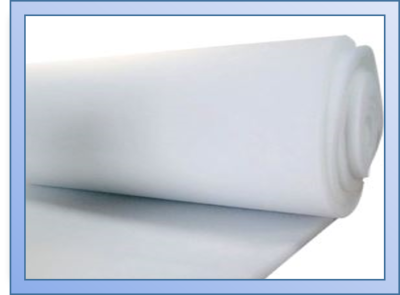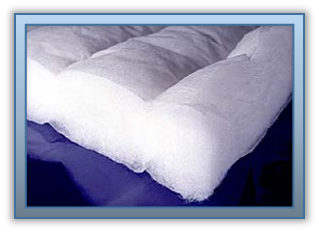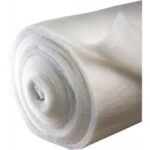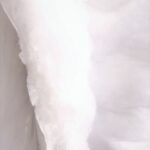- What is Fiber?
- What Are The Types Of Fiber?
- What is Silicon Fiber?
- What is Thermo Fiber?
- What is Micro Fiber?
- What is Bead Fiber?
- Which fiber types should be used in which areas?
We answer all your questions.
What is Fiber?
Fiber briefly; It is the plural of the word fiber, and it is a group of colored and colorless fibers that have the ability to bend with tensile and tensile strength, to stick on each other, and whose length is much longer than the width.
Raw material of woven products. In addition to natural fibers obtained from plant, animal and mineral sources, there are also fibers made by various chemical processes. Cotton, kapok, linen, hemp, jute, ramie, manila, alpha, sisal, coco are the main fibers obtained from plants. wool, mohair, camel hair, cashmere, llama, angora rabbit hair alpaca, silk are natural fibers of animal origin. The fibers are of two types, staple batch and continuous uncut according to their length. In staple fibers, each fiber is about one centimeter. Cotton and wool are of this type. In continuous fibers, the fibers are too long. Silk and some chemical fibers from natural fibers are included in this type of fiber group. Chemical fibers can be cut short and staple like wool and cotton. In addition to fiber lengths, other features that affect the quality of the fiber are brightness, fineness, strength, flexibility, thermal conductivity, moisture absorption, water absorption, mold, heat effect, burning tendency and spinning ability. Various chemical fibers that can weave with the desired luster can be produced by methods such as using long fibers. Fabrics made of fine fibers are softer and more prone to sewing. In addition, since the fiber surface is higher, heat insulation is better in this type of weaving. The fibers can be listed in order of fineness as silk, polyamide nylon, cotton, wool, mohair mohair and bast fiber plant body fibers. The important thing in weaving is the fineness of the yarn made up of the fibers rather than the fineness of the fiber. Yarn fineness is understood from the numbers given according to the length of the yarn obtained from the fiber of a certain weight. The greater the number of the yarn, the higher its fineness. Another desired feature of the fiber is the strength of the yarn made from the fiber. This is measured by the force acting on the yarn divided by the yarn count. Humidity increases the strength of plant-derived fibers. It reduces the others. The fiber with the highest strength is glass fiber from chemical fibers. Others are resistant in the order of polyamide, polyester, silk, linen, cotton, acrylic fiber, rayon, acetate silk and wool. Flexibility is also desired from the fiber. The flexibility increases the strength of the fiber and consequently the fabric. Bagging occurs in garments made of non-flexible fabrics. According to the decrease in the flexibility of the fibers, rubber, elastomer fiber, polyamide, wool, silk, triacetate, acrylic fiber, polyester, rayon, cotton, linen and glass fiber are very important in terms of determining the season in which the fabric will be used. In this regard, the touch of the yarn is also a factor affecting the fabric in terms of heat insulation. Its thermal conductivity, from high to low, linen, cotton, rayon, acetate yarn, polyamide, polyester, wool, acrylic and glass fiber, are in order. The ability to release this moisture by absorbing moisture and then evaporation is a consideration in terms of health and comfort in summer. is a concern. Also important is the rate at which moisture absorbs and vaporizes. To reduce this, special finishing can be given to the fiber. Water shrinkage decreases gradually in the order of wool, cotton, linen, rayons, silk, acetate silk and other chemical fibers. In addition, cotton, linen and rayon tend to mold in humid places. The resistance of the fibers against high temperatures can be increased by using flame retardant and finishing. The heat resistance of the fibers decreases in the order of cotton, linen, wool, silk, rayon, acetate silk and polyamide. Porosity and spinning ability, which shows the ability to be dyed, are other properties sought for a perfect fiber. Fiber fineness, surface structure and length are important factors affecting the ability of fibers to stick together well and spin.
What Are The Types Of Fiber?
Termo Fiber (30gr – 500gr production)
Bead Fiber (1kg.- 5kg. – 10kg.)
Silicon Fiber (30gr – 500gr production)
Interlining Fiber (30 gr. – 500 gr. Production)
Silicon + Interlining Fiber (30 gr. – 500 gr. Production)
Silicon – Non-Strain Fiber (30 gr. – 500 gr. Production)
Filter Fiber (30 gr. – 500 gr. Production)
Micro Fiber (Goose Down Alternative) (Production between 60 gr. – 500 gr.)
For Your Fiber Orders;
Delivery times and minimum order quantities may vary for your orders, except for standard fiber weights (30-500 gr.).
Silicone Fiber

It is a type of fiber consisting of a combination of fibers in which filling material is placed in the production phase to make it look fuller.
Filling weights vary.
As the weight increases, the thickness of the product increases from cm-mm.
Thin or thick weight is chosen according to the product to be produced.
Production is made in certain weights as standard.
We have productions between 30 grams and 500 grams.
500gr + product weights are included in special orders and a minimum of 1.000 meters of order is processed.
It is used in all areas.
If you wish, you can take a look at our fiber quilted products.
Silicone Interlining Fiber

It is a state of silicone fiber with interlining added.
In general, it is produced with single backing and optionally with double backing.
Interlining is laminated (heating process) and adhered to the product.
Although it varies depending on the quality of the product, the product with interlining does not sag and therefore it is highly preferred because it facilitates sewing on products.
30gr as standard. – 500gr. Silicone interlining fiber is produced between.
For 500gr. + Product thickness, a minimum order of 1,000 meters is processed.
It is used in all areas.
Thermo Fiber

The Diffirence of our other products, Thermo is produced using zero chemical substances.
Without spoiling the originality of the product, the product mixture is processed as fiber + fiber.
Thermo has high air permeability. It is durable, repels moisture and feels very soft to the touch.
During the Kovid-19 Pandemic period, especially Hospitals and Shopping Malls etc. It has been forwarded to our customers for use in air conditioners (culverts) in the areas.
Since it does not contain chemicals, it is used in both healthy and powerful air conditioners.
It has been observed that the product is used in a solid way without splitting into fibers.
Interlining is not used in our product. Silicone types are recommended for nonwoven products.
60gr as standard. – 500gr. Thermo production is carried out between.
It is used in all areas.
Micro Fiber – Goose Down Alternative

What makes micro different from other types is softer, softer and produced without using silicon.
Micro should be introduced and preferred instead of goose down fibers.
It is produced with or without fuss. You can choose it as stitched or laminated.
It is used in all areas.


